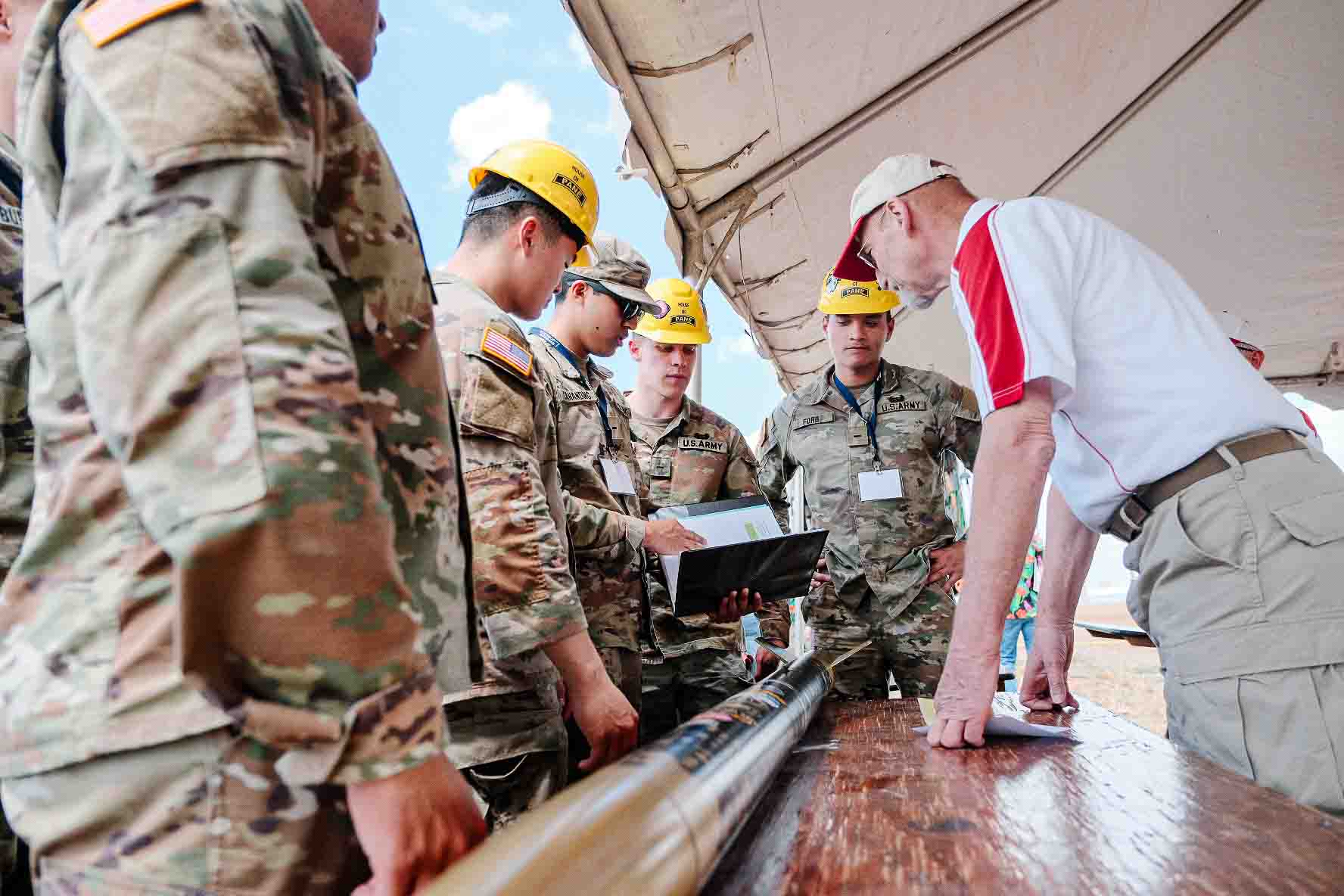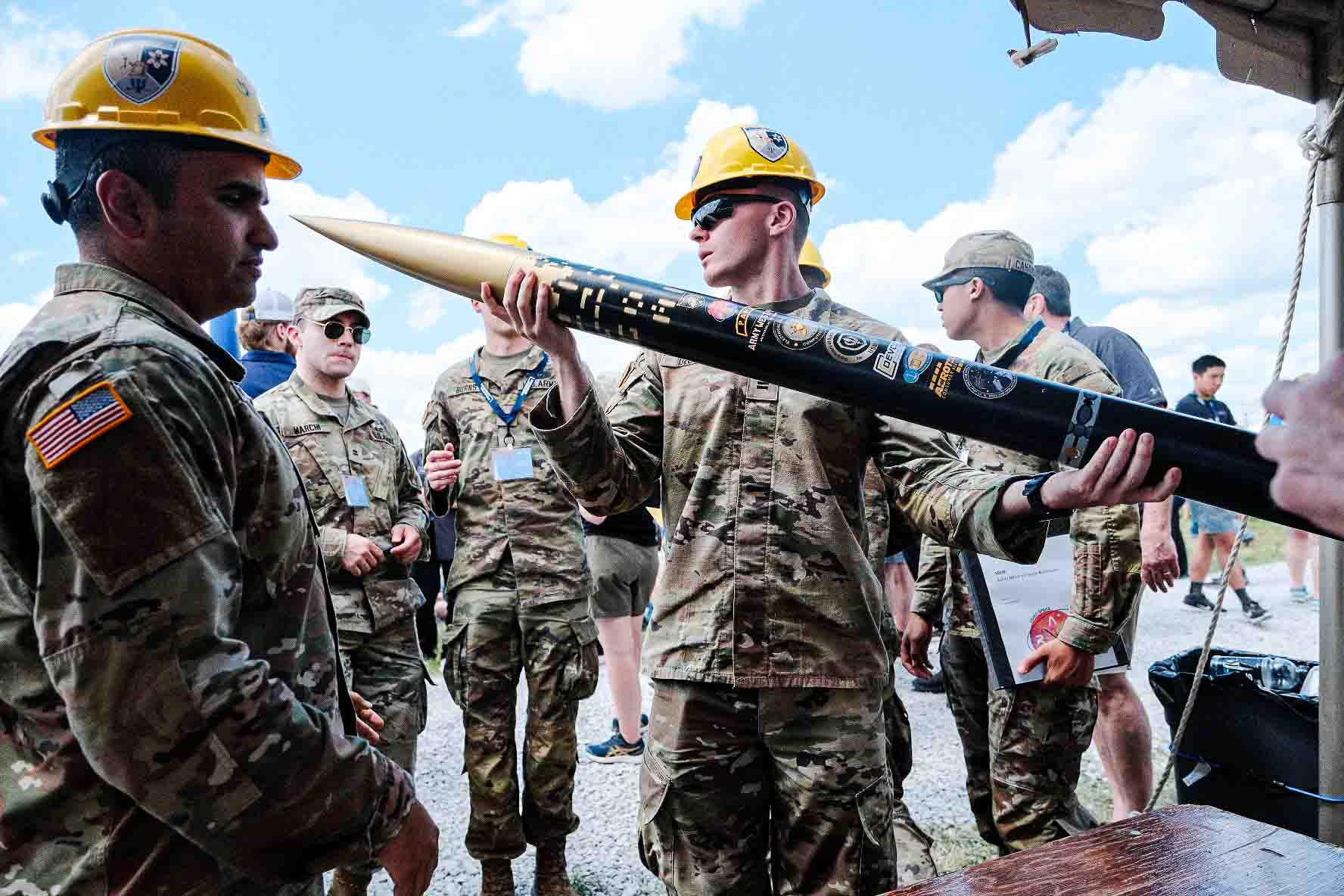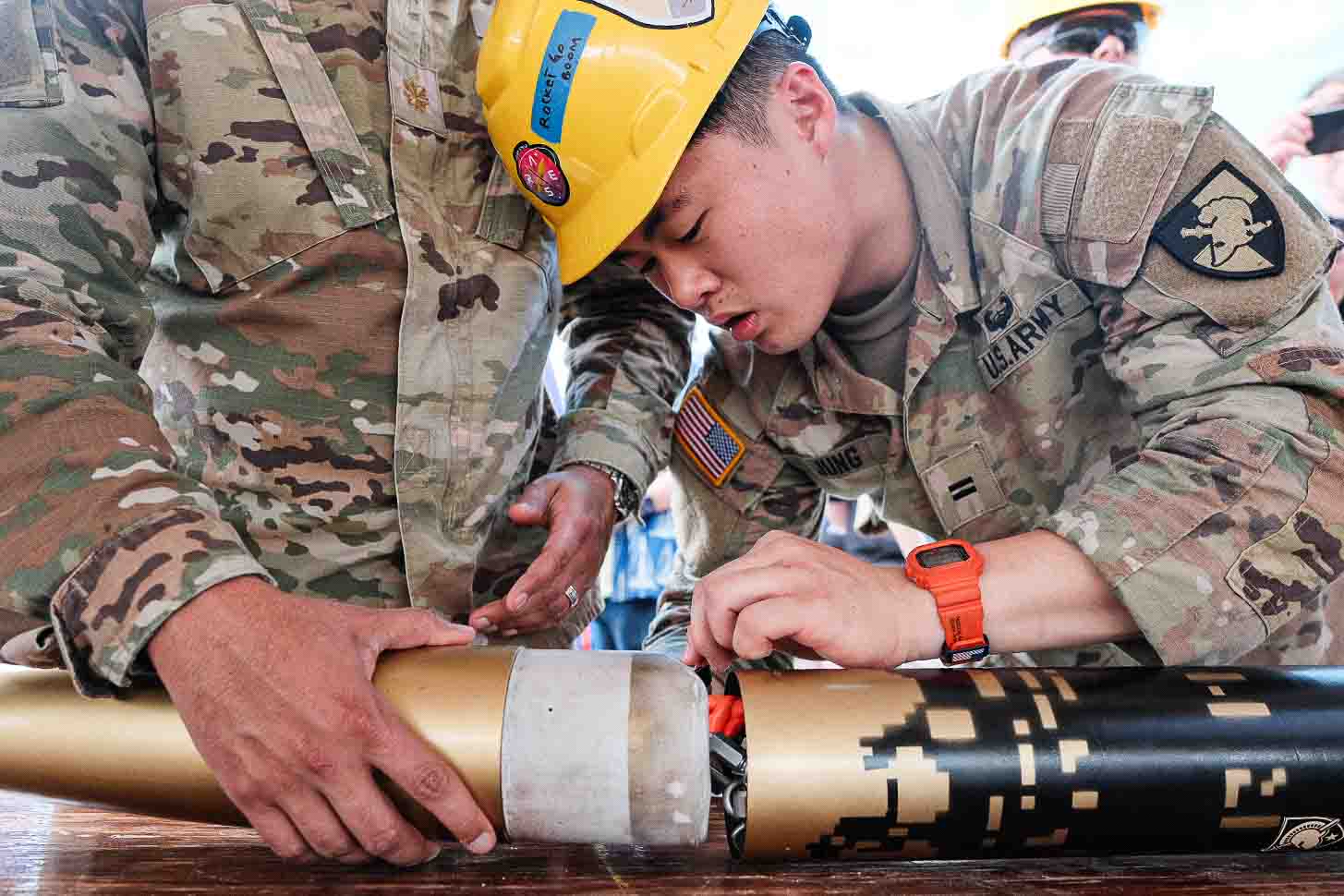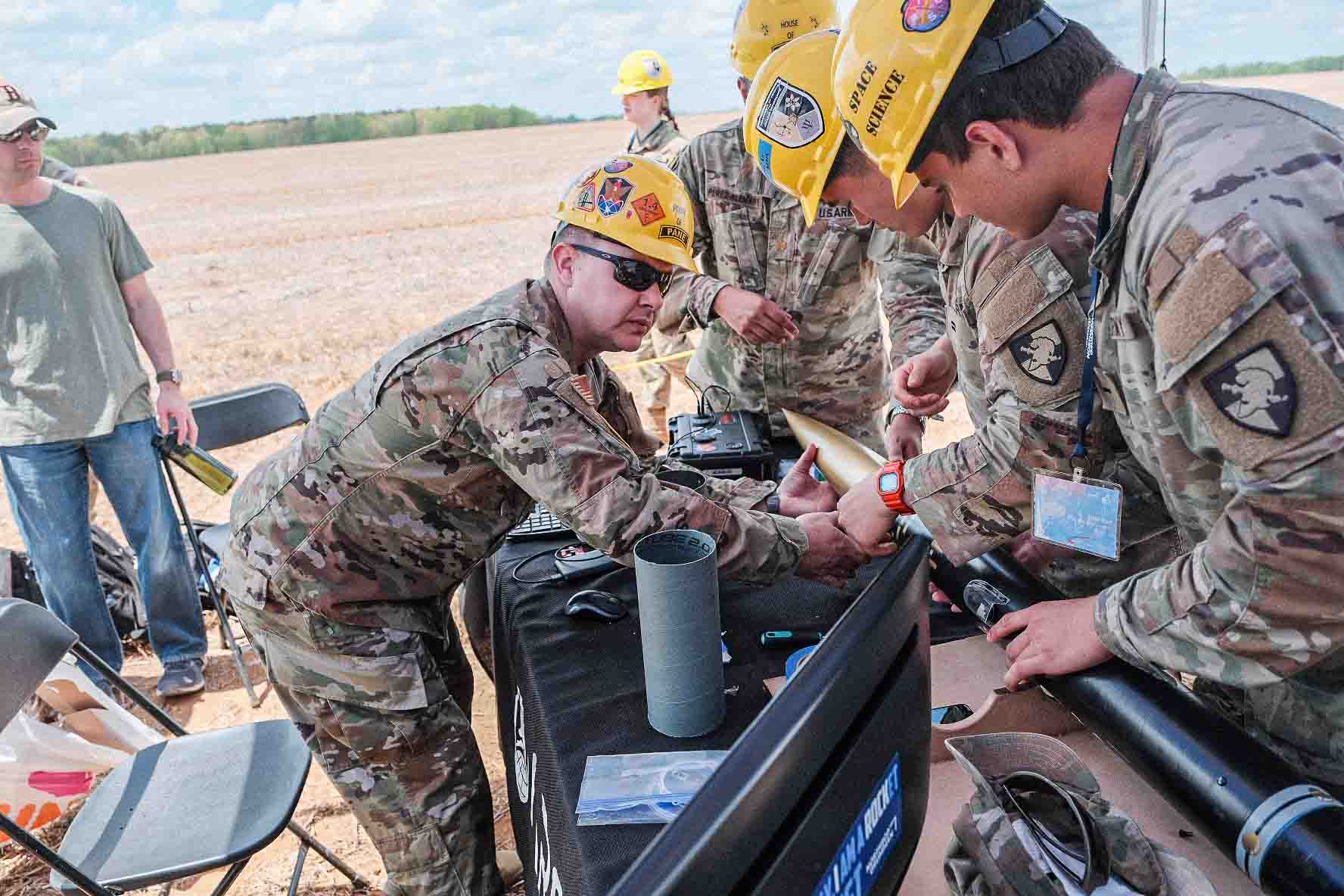Every goal, every mission, every meaningful act starts with our feet firmly planted on the ground. Then we look up into the infinite and tell ourselves we'll figure out ways to fly. The U.S. Military Academy Army Rocketry and Engineering Sciences team proved that as they secured a first-place victory in two award categories during the virtual 2023 NASA Student Launch Ceremony on June 6.
The team took first place beating Navy once again for the Service Academy award, which is awarded to the top-performing team from one of the U.S. Service Academies. Additionally, each year the most exceptional team competing in the competition for the first time at the collegiate level is presented with the Rookie Award, which USMA ARES also won.
The ARES team used their ingenuity and knowledge of rocketry during the NASA Student Launch Competition on April 15 at NASA's Marshall Space Flight Center as the team faced other competitors, launching high-powered amateur rockets up to an altitude of 3,500 and 6,000 feet with scientific payloads attached.
According to the NASA media advisory team, about 800 students from universities, high schools, and middle schools also competed. Moreover, NASA hosted over 50 teams from 21 states and Puerto Rico, with more than 40 teams launching throughout the competition.
With that, West Point had a stellar pair of subject-matter experts in Lt. Col. Chalie Galliand and Maj. Robert Perez-Alemany, assistant professors in the Department of Physics and Nuclear Engineering and co-advisors for the USMA ARES team.
With a master's degree in space science and a storied career as an officer in the Air Force, Galliand had provided his team with a wealth of knowledge that dates back to his first assignment as a lieutenant 13 years ago when he served with the Department of Defense Space Test Program.
"I'm working at West Point now because during my work as a lieutenant with the DOD Space Test Program, I assisted West Point in launching the Black Knight satellite, which was their first endeavor into the space science program in 2009," Galliand said.
Perez-Alemany, a 2010 USMA graduate, earned a dual master's degree in Aerospace and Astronautical Engineering and helped spearhead the teams' efforts in qualifying and competing in the competition.
Part of meeting the standards to qualify hinged on the cadets making project management a requisite procedure in all their endeavors.
On that note, NASA provided the team with a student launch handbook that allowed the team members to create a feasible plan to establish structure in their developmental process.
Following this, team members were assigned different tasks and long-range calendars were produced to meet stringent deadlines, with one of the assignments requiring them to write and send a detailed proposal that NASA had to approve.
"That was one of our biggest wins. We got the proposal done in under a month," Perez-Alemany said. "It was 78 pages worth of information. People need to understand that this team of cadets is one of the best because most capstone teams typcially write 12-14 pages of a proposal for their project. We articulated our idea in 78 pages and showed NASA that this is our plan and this is how we're going to achieve it."
According to Galliand, the next step was the preliminary design review, in which cadets based their design considerations on the rocket's weight, the rocket motor and the performance of that motor, among other elements, to see if all aspects of design were optimal.
“‘Open Rocket,’” which is an open-source, free software that we use to design the rockets, helped the cadets, who are mostly sophomores and plebes, in getting familiar with the process of understanding the components of a rocket, such as the motor, the airframe and the nose cone, which are all essential in allowing the rocket to fly," Perez-Alemany said.
Galliand added that Open Rocket was a powerful tool for cadets during the design process.
"We covered a lot of what it takes to build a rocket with Open Rocket during the last academic year before we committed to the competition," Galliand said. "We wanted to see if they can use it. We wanted to see if they could build a rocket based on the things we implemented into the software and they've learned that a little bit ahead of time, which put them in a good path for the competition."
Before the competition, Class of 2025 Cadet Rea Smith was so confident in her team's capabilities to win that she and the cadets "were already making plans about how we're going to celebrate," she said.
As the team followed the proverbial path to victory, Smith said that watching her teammates go through the arduous process of building the rocket kept her motivated and inspired through all challenges and setbacks.
"We're not building a spacecraft that we're going to send out with nuclear propulsion, but it's good to start somewhere," Smith concluded. " ... Watching my teammates thinking, feeling and knowing that they're doing something bigger than themselves is what keeps me motivated the most. We're all motivated to push forward. We were working hard together and at the end of the day, we're happy working together as a team."



